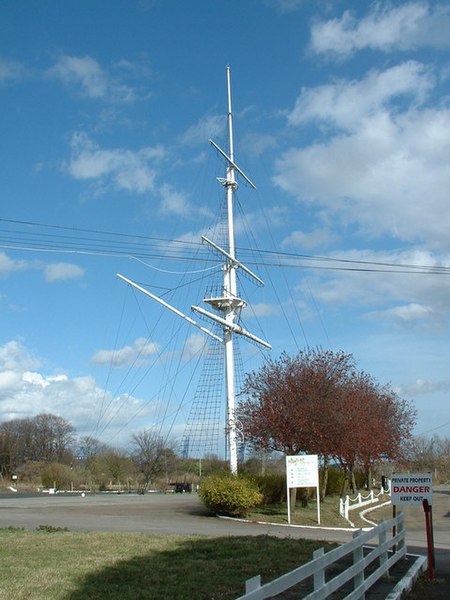A ship's mast stands on the site of the Royal Navy shore establishment HMS Ganges at Shotley, Suffolk in England. It was formerly used for mast climbing practice when the site was a training centre for boy seamen. Every boy at the school had to climb partway up the mast to qualify. On ceremonial occasions the mast would be manned by a team of boys standing on various parts. The one who stood on the truck at the top was known as a "button boy". In 1928 one of the boys climbing the mast died after falling and missing the safety net at its base. Ganges closed in 1976 and the mast afterwards fell into disuse, though it is a grade II listed structure. There are proposals to restore the mast as part of a redevelopment of the site for housing.
Mast pictured in 2004
A class of New Zealanders in front of the mast and figurehead in 1944
Detail from 1944, showing safety net
Dilapidated mast pictured in 2009
HMS Ganges (shore establishment)
HMS Ganges was a training ship and later stone frigate of the Royal Navy. She was established as a boys' training establishment in 1865, and was based aboard a number of hulks before moving ashore. She was based alternately in Falmouth, Harwich and Shotley. She remained in service at RNTE Shotley until October 1976.
Bill Jordan, the New Zealand High Commissioner, with a group of New Zealand sailors in front of the masthead and figurehead of HMS Ganges.
Memorial in Mylor churchyard commemorates the 53 boys who died whilst training on HMS Ganges between 1866 and 1899.
HMS Minotaur, left; HMS Caroline, centre foreground; HMS Agincourt, right, circa. 1906
Main entrance to HMS Ganges







